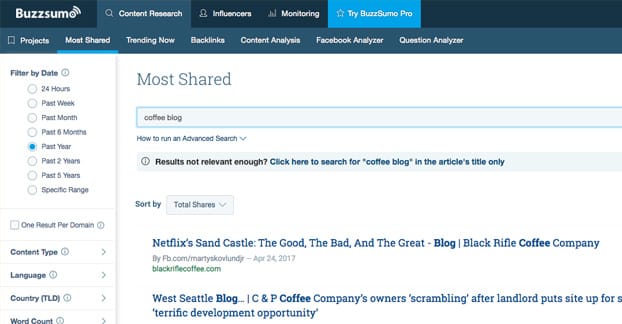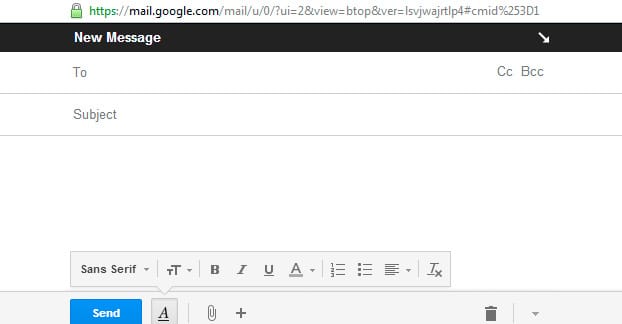What do you think is the best way to get people to trust your brand and buy your product? Is it advertising? TV commercials, radio ads, web ads? Is it testimonials on your website? Is it social proof?
While every one of those plays a role, one of the best sources of potential conversions is actually the simple blogger recommendation. A review from a blog author can go a long way towards referring traffic, building trust, and gaining customers.
This is, after all, basically what affiliate marketing is all about, right? Brands want people to recommend their products, so they incentivize it with affiliate payments. Of course, these days an affiliate page is pretty easily recognizable. More organic reviews are tougher to get, but you can often acquire them simply through giving the blogger a copy of your product to review.
You can’t simply track down an address and send a product unsolicited, though. Chances are the blogger isn’t going to take automatically write about you. What you need to do is pitch the idea to the blogger in question, get them to accept the deal, and get your review organically.
1. Make a List of Industry Bloggers
The first four tips are how you can find a large list of bloggers as potential targets. The first thing you should do is run Google searches for various keywords in your industry and scrape the top four or five pages of Google for unique blogs.
You can also use tools or blog networks like BuzzSumo or Alltop to help find top blogs in the relevant industry. Make a huge list; you’ll filter it later.
2. Make a List of Generalist Bloggers
The first tip was making a list of industry bloggers, but not necessarily bloggers who allow sponsored reviews. This second one, you should look for bloggers who cover a wide range of topics that might include your industry, and who have published sponsored posts in the past. Use keywords like “sponsored post” or “review copy” to find such posts.
3. Make a List of Bloggers Mentioning You
The third iteration of this tip is to look for bloggers who have mentioned your brand in the past in some contest. Ideal targets are bloggers who have used older versions of your products, bloggers who have left less-than-stellar reviews of older versions or with problems you have fixed, and bloggers who have mentioned coveting your products but either not being able to afford or unable to justify buying.
4. Look for Existing Reviews
Look for existing reviews of your products. Any blog that has already published a good review of your product should be added to a list of successes, which you will continue to grow as more people cover your items.
Any that have left poor reviews should be added to another list of potential customer service outreach opportunities, but that’s for a different article at a different time.
5. Filter Blogs for Viable Options
Once you have your huge list, remove any duplicates. I recommend a spreadsheet too to assist with this. Start harvesting information to try to filter out bad blogs. Eliminate blogs that are poorly written, not updated, have very few readers, or have no engagement. Drop sites sponsored by competitors, those that don’t allow sponsored posts, and those with different demographics as well. Prune out instances where multiple sites are run by the same blogger, while you’re at it.
6. Learn the Blogger’s Audience
As a final layer of filtering, look deep into the eyes of the blogger, past their retinas, and into their audiences. See what kinds of people frequent the blog – check their social media following and their typical advertising – and see if they match your customer base. Sometimes an ideal-looking blog just doesn’t actually have the right kind of people to buy your product, even with a good recommendation.
7. Create a Good Email Pitch
Once you have your list of target blogs – which could be quite long – start to craft an email pitch.
This post does a pretty good job of summarizing what a pitch should look like, but definitely make one of your own, don’t just copy and paste what’s there. If you need to, hire a writer to make a skeleton pitch for you; it won’t be expensive since it’s only a few hundred words at most.
8. Customize Your Pitch to the Blogger
Before you even think about putting something in the To: field for your email pitch, decide on which one blogger you want to send it to. Do your research and figure out how to address them personally, casually, in a way that they’ll be responsive to. If they have a contact page with advice for reaching out, be sure to follow it or you’re liable to be ignored.
9. Create a Press Release with Relevant Details
With a customized email pitch in hand, it’s time to build your supplemental materials. Actually, some of these should be done for previous marketing, and some should probably be done before you even start researching bloggers, but either way you need them on hand. A press release is the first part; something that tells the relevant technical info of your item so if the blogger wants to reference it, they don’t need to dig around on your site or in the product itself to find out. Everything from dimensions to usage guides and resources should be provided in a concise way.
10. Provide Media for the Blogger to Use
The other aspect you want to provide is media, ranging from high quality product images to trailer/pitch videos, if the blogger wants to use them.
Don’t try to require their use, just provide them in case the blogger doesn’t want to make their own or doesn’t have the resources to make good versions. A low quality photo isn’t going to sway anyone, after all.
11. Don’t Demand a Glowing Review
One of the cardinal sins of blogger outreach seeking product reviews is attempting to demand a positive review. If the blogger writes a positive review of something they didn’t like and don’t think their audience will like, they will lose credibility with anyone who takes their advice. Bloggers don’t want to risk the relationship they have with their audience, the trust they have spent a long time building up, so they aren’t going to accept your offer unless it’s likely far more than you’re willing to pay. If you’re worth a positive review, you’ll get one based on your product, not your sponsorship.
12. Don’t Incentivize a Review Directly
Don’t forget that the FTC – or other country-specific governing bodies – have specific rules and regulations about testimonials. If your product is very valuable or you’re trying to incentivize it, it needs to be flagged as a sponsored post, or else the blogger could be shut down or you could be fined. If the product is low value, the blogger still needs to disclose it. Any financial or other compensation you provide to encourage a review needs to be disclosed to prevent disingenuous advertising.
13. Don’t Avoid the Sponsored Tag
I have to reiterate it here; don’t demand the review be labeled organic or otherwise in avoidance of federal laws. Just don’t do it. Even if you get away with it, you might be caught eventually, and that kind of thing can devastate a business. Many bloggers simply won’t take the risk.
Alright, to be honest, you’re probably not going to be actually fined by the FTC. They certainly have the power to do so – they can even shut your business down for particularly egregious violations – but they generally don’t care about small businesses. Even so, it’s a good idea not to push boundaries or build a culture of flaunting or ignoring laws.
14. Share the Finished Review
Once the blogger has accepted your pitch, received the product, and written the review, you need to follow up. The easiest thing to do is share the review on your relevant social networks. You should also record the link of the published review in your spreadsheet and link to it on your site as part of a testimonial. You can even take excerpts as a landing page testimonial if the blogger approves of you doing so.
15. Continue the Relationship
Just like with guest posting and other forms of outreach, the strongest element of a review like this is not the review itself, it’s the relationship you can grow with the blogger. You can start linking to their site in other contexts, and they’ll notice. Contribute to their success when you have the opportunity. Return the favor with a review of their product if they have one. When you release a new product or update the one they reviewed, offer to let them have a shot at a review again, even a pre-release review for added hype building.
16. Contribute to Bloggers with Great Reviews
When a blogger leaves you an exceptionally stellar review, or even becomes a paying customer themselves, it’s worth noting that they’re exceptionally valuable to you.
It can be worthwhile to look for opportunities to contribute to their blog in the future, be it through a Patreon, buying a product, or sponsoring an event they’re hosting. The better the review – and the better the people coming in because of it – the more you should be willing to help them out for a chance at future promotion.
17. Offer More Products for Blogger Contests
One “incentive” you can use for a blogger, by the way, is more than one copy of your product. Offer one for them to review, and if they like it, offer a handful more for them to give away to their audience. If the product is sufficiently relevant, they’ll jump at the chance for some free swag to give away. Just make sure it’s something actually relevant, or at least something the blogger perceives as relevant. Rule number one of running a blog contest is to give away something that attracts readers who are valuable to you, rather than just anyone who wants the product.
18. Do It Yourself with Guest Posts
Another option, if you can’t get bloggers to review your product with the minor incentive of giving them a copy, is to pitch them a guest post instead. They probably won’t want a purely commercial review of your own product, but you can be clever about it instead. Come up with a pain point their audience likely experiences, talk about solving it, and drop your product as a potential solution among several. You can get a lot of value this way without having to give away a product.
19. Consider Paying for Placement
Yet another option, if you’re willing to pay for it, is to bypass the whole pitching process and simply pay for placement. There are organizations that will hook you up with an influencer in your industry and allow you to pay for placement. This is most common on Instagram, but it can happen with blogs and other sources of potential reviews as well. Just be aware that the top influencers are not going to be cheap.
20. Hire a PR Agency
If you’re willing to spend money, you can go with a PR agency instead. PR agencies often have their own processes and their own contacts, and can get you coverage on larger sites than you can manage on your own. However, paying for a PR agency can be pretty expensive, depending on what level of promotion you’re looking to get. Just remember that it’s an option, and can get you consistent results.
 ContentPowered.com
ContentPowered.com










